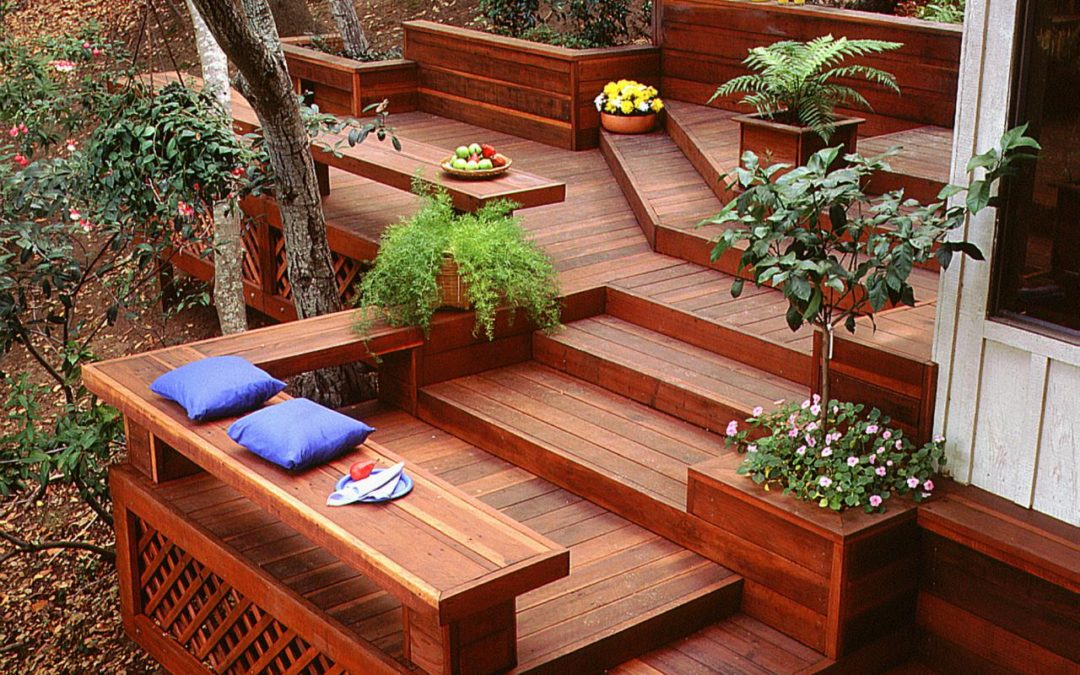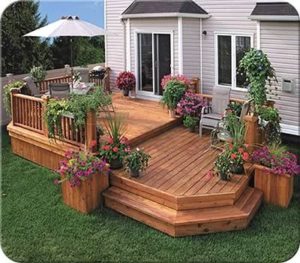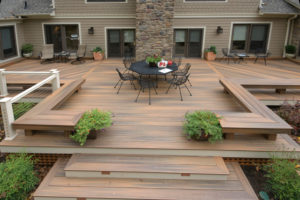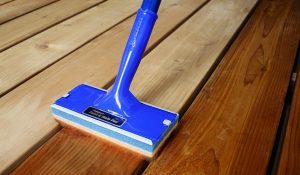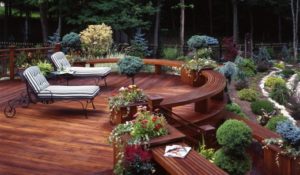
A well-maintained deck helps you make the most of your home’s outdoor space, not to mention increases its value. Here’s the catch–since your deck is exposed to the elements 24/7, it also needs year-round attention to ensure its structurally sound and looking its best. Protect your investment with this handy maintenance schedule.
- Repair the deck.
You should inspect your deck for needed repairs annually, looking for things like signs of rot, loose or rusty hardware and the condition of the overall structure. Pay close attention to areas that come within six inches of the ground or are close to water sources like downspouts—these are the spots you’re most likely to see decay.
- Use a screwdriver to probe areas you suspect are rotten. If your screwdriver sinks in more than 1/4th inch, you’re dealing with rotten wood and should have it repaired or replaced.
- Check the ledger board underneath your deck that connects the structure to your house. If you see damage or notice decay on the ledger board, this is a problem that needs immediate attention—if the ledger fails, the deck fails.
- Carefully survey the deck boards for cracks, warping, and rot. These issues only get worse over time, and you’ll lengthen the lifespan of your deck by making repairs as soon as you notice problems.
- Last but not least, check the railing. Give it a good shake—if things seem loose, there’s a good chance you’re dealing with rot or loose hardware. Tighten or replace the lag screws on each post if necessary, and confirm there’s no rotted wood insight. If you see a crack developing around the lag screw, remove it, seal the crack and put a new lag screw in.
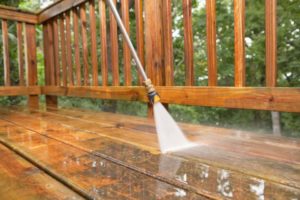
- Wash the deck.
When to do it? Mid to late Spring
First, sweep the deck to remove any loose debris. Then take a small putty knife and remove foreign material caught in between the deck boards. Next, choose a cleanser that’s appropriate for your type of deck. If it’s wood, you can use a normal deck cleanser, but read the directions and follow them; some cleansers should be applied to wet boards, and some to dry. Composite decking needs a specially formulated cleanser; but if you have vinyl decking, you only need mild soap and warm water.
You’ll want to wash your deck on an overcast day (cool deck boards are best to keep the cleanser from evaporating).
Wood decks: Using a garden sprayer, paint roller, or a stiff-bristled broom, apply deck wash in a thin layer (if you see pooling, you’ve applied too much) and let it soak according to the manufacturer’s directions—most recommend about 10 minutes. Scrub, rinse and you’re done.
Composite decks: Same as above, but make sure not to use a pressure washer—it’s too harsh on composite decking and will most likely void your warranty. You can also use a deck brightener (look for oxalic acid as an active ingredient) to get rid of rust stains.
- Seal the deck.
When to do it? Late Spring
Sealing the deck is just as important as cleaning it; you want to keep it looking its best. Wait until the deck is completely dry (give it a week or more), then apply your chosen sealer according to the manufacturer’s directions. They come in many different types:
- Clear Sealer: Lets the natural color of your decking shine through. This is the lightest option and least durable, so expect to reapply it annually.
- Semi-transparent Stain: Provides rich color while letting your wood’s natural grain show through. More durable than clear sealer, semi-transparent stains should be reapplied every other year.
- Solid Stain: The most durable stain for maximum weathering protection and vibrant color. Solid stain covers wood grain completely and can last up to five years.
Tip: When applying deck stain, less is more. You should only apply as much as the wood can absorb and no more. Putting a lot on at once may make your deck look great at first, but any stain that doesn’t absorb is going to peel up in time.
- Preventative upkeep.
When to do it? Year-round
Depending on the kind of deck you have, it can easily last 15 to 20 years with proper maintenance. In addition to cleaning, sealing and repairing your deck, there are other things you can do to protect your investment.
- Trim bushes and trees back from the deck at least twelve inches to reduce contact with foliage. Not only does this practice slow the process of wood rot, but it also makes it so wood-destroying insects have a harder time getting a foothold.
- Move your deck furniture around on a set schedule to avoid uneven coloration and wear patterns.

